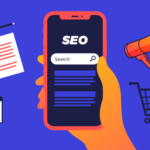On-page SEO is essentially a bunch of strategies and best practices for your site pages to make them more search engine friendly and, in this manner, help your rankings.
As you most likely know, keywords are at the core of almost everything on-page SEO. In any case, on-page streamlining includes plenty of components — not simply keywords — so it’s not entirely obvious some of them.
To make it simple for you to guarantee every one of your pages is accurately streamlined for the ideal rankings, here’s a convenient checklist to tick off.
URLs
Survey the URLs of all pages on your site to guarantee they’re brief instead of long and complex. More limited URLs will have better navigation standards and are all the more effortlessly comprehended via search engine crawlers.
You can get help from SEO AU to add URLs accurately.
Remember your page’s essential keyword for the URL, eliminate filler (also known as stop) words like “the”, “for”, and “to”, and hold it under 60 characters.
Optimising Images
Your site is possibly overflowing with pictures, and that is something worth being thankful for as pictures contribute essentially to further developing both client experience and rankings. They make your content all the more simple to-devour, drawing in, and critical, and when improved accurately, assist you with driving more traffic to your site.
To optimize your images for on-page SEO, the following are several things to guarantee:
Picture Filename and Alt Text
Google bots can’t “see” pictures like people. They need to go with text to get what’s going on with the picture. Along these lines, compose an expressive filename (“black-silk-tshirts.jpg” rather than “82596173.jpg”) and alt text (which helps on the off chance that the picture neglects to stack for reasons unknown) for each picture on your site, remembering keywords for both.
Alt text additionally helps make your site more available, as screen perusers utilize the alt text to portray pictures to outwardly tested clients. Indeed, it’s judicious to test your site’s availability to guarantee you never need to hack up tons of money for ADA claim repayments.
Picture Document Size
Page speed is a significant positioning sign for both work area and versatile pursuits, and massive pictures delay down your site’s heap speed. So try to pack all pictures to lessen their size — in a perfect world under 70 kb.
Titles and Meta Depictions
Make sure that you’ve remembered your fundamental keywords for the front of the title labels, all things considered. Guarantee the length of your title labels is under 60-65 characters and no longer than 70 characters, any other way, it might get shortened in the SERPs.
Likewise, the title ought to be the main component enveloped by the H1 heading tag. All in all, just a single H1 tag for every page that is held for the title.
For meta depictions, simply guarantee you have composed keyword-rich and welcoming meta tags that apply to your client’s search expectation. Hold it under 160 characters for every one of your pages. If you don’t, Google will pick some pertinent text from the page and show it as the meta tag in the SERP, which isn’t great for SEO.
Page Load Speed
Speed is a significant positioning element you can’t stand to disregard. If your pages take anything more than a few seconds to load, your visitors will skip to a contender, and achieving first page rankings will stay a fantasy.
Hence, confirm that:
- Code is advanced with minified CSS and JS
- There are no superfluous sidetracks
- You have compacted all pictures
- You’ve empowered document pressure and program reserving
- Server reaction time is ideal
Consistently survey your site speed utilizing PageSpeed Insights to discover the specific regions that can be improved.
Internal and External Links
Guarantee you have an appropriate linking procedure that you generally follow. Both internal and external links assume a part in your on-page SEO.
External links
According to both Google crawlers and human visitors, referring to external sources and having outbound links is critical for building believability. Notwithstanding, ensure that you’re just linking back to great sites and dependable sources.
Furthermore, guarantee there are no wrecked (“404 not discovered”) links, as they hurt SEO and user experience. If you might have a ton of site pages, it is best encouraged to make a drawing in and simply explore the 404 blunder page. This will assist you with holding site guests and helping them with discovering applicable content/activities.
Internal Links
Make a point to deliberately interlink pages and content on your site. This assists crawlers with bettering comprehension and ranking your content for the right keywords.
Internal linking likewise assists with directing visitors to applicable pages and keeping them locked in.
Content
All your blog entries and site duplicates assume a crucial part in on-page improvement. Other than guaranteeing your objective keyphrases are sprinkled prudently and normally through your substance title, URL, subheadings, and paras. The following are several things to get right.
Construction and Meaningfulness
Confirm the design of content on all pages. Ensure you’ve utilized keyphrase optimized headings and subheadings – H1, H2, H3, etc., to assemble a consistent order, which works on the meaningfulness and crawlability of your content.
Completeness
Studies propose that more lengthened, top to bottom posts perform better compared to shorter ones with regards to Google rankings. Thus, strive to have a word include 2,000+ words in each piece of content.
Extensive, long-structured content will serve your visitors better as it probably addresses every one of their inquiries regarding the theme, so they don’t need to search for additional understanding assets.
Over to You
With each new update to its centre algorithm, Google quickly moves its attention to compensating sites with the best user experience.
However, nailing your on-page improvement, which ties intimately with UX, will keep on assisting you with accomplishing top rankings and staying there. Thus, keep this checklist convenient as you work on your SEO in 2021 and then some.







1 Comment